Pathogen-free stocks a primary need
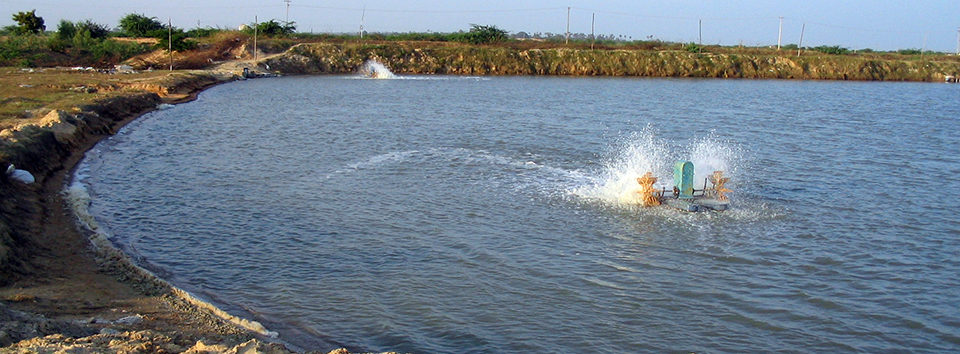
Though India has a long history of shrimp farming, commercial shrimp aquaculture gained momentum only during the late 1980s. In the early 1990s, many corporate bodies invested in the Indian shrimp-farming sector and fueled explosive growth. Many hatcheries and feed mills were established to supply seed and feed to the farmers.
By early 2000, the shrimp-farming area had increased from 60,000 ha in 1991 to 145,000 ha, and shrimp production had increased from 40,000 metric tons (MT) to 100,000 MT. This growth came in spite of the setback caused by White Spot Syndrome Virus (WSSV) in late 1994. The disease impacted the industry significantly in 1995 and resulted in the exit of almost all corporate investors by 1997. This was followed by a recovery and moderate growth in the last few years.
Production in 2003
Shrimp production estimates by states are presented in Table 1. India produced about 115,000 MT of shrimp in 2003. Freshwater prawn, or scampi, production was estimated at 15,000 to 30,000 MT (Table 2).
Chandrasekar, Shrimp-farming areas, Table 1
| State | Estimated Potential Area (ha) | Estimated Area Under Farming (ha) | Estimated Production |
|---|---|---|---|
| West Bengal | 405,000 | 45,890 | 28,270 |
| Orissa | 31,600 | 9,000 | 10,280 |
| Andhra Pradesh | 150,000 | 71,420 | 59,190 |
| Tamil Nadu | 56,000 | 3,620 | 4,990 |
| Pondicherry | 800 | Negligible | Negligible |
| Kerala | 65,000 | 13,680 | 7,570 |
| Karnataka | 8,000 | 3,040 | 2,620 |
| Goa | 18,500 | 930 | 710 |
| Maharashtra | 80,000 | 460 | 640 |
| Gujarat | 376,000 | 880 | 1,050 |
| Total | 1,190,900 | 152,080 | 115,320 |
Chandrasekar, Scampi production, Table 2
| State | Estimated Farmed Area (ha) | Estimated Production (mt)* |
|---|---|---|
| West Bengal | 4,100 | 2,140 |
| Orissa | 2,995 | 410 |
| Andhra Pradesh | 21,580 | 27,020 |
| Tamil Nadu | 180 | 130 |
| Kerala | 830 | 200 |
| Karnataka | 165 | 180 |
| Maharashtra | 4,420 | 290 |
| Gujarat | 360 | 80 |
| Total | 34,630 | 30,450 |
* Due to unexpectedly low survival, actual production may have been as low as 15,000 mt.
Most prawn and shrimp farming is carried out by individual, small to medium-size farms supported by a well-organized seafood-processing infrastructure. At present, farmed shrimp contribute 85 percent of India’s total shrimp export in terms of value and 65 percent in terms of volume.
Hatchery sector
In 2003, India had about 300 shrimp and prawn hatcheries, with the vast majority located in the states of Andhra Pradesh, Tamil Nadu, and Pondicherry. The annual production capacity for shrimp postlarvae (PL) is 13 to 14 billion, although about 11 billion PL were produced in 2003. Seed production from prawn hatcheries increased from 500 to 600 million in 2002 to around 1 billion in 2003.
Availability of quality broodstock
Indian shrimp hatcheries depend entirely on wild broodstock collected from the sea. Though broodstock availability is not a major problem, there is a widespread perception that broodstock quality is deteriorating rapidly. It is becoming difficult to get sufficient numbers of pathogen-free broodstock, especially during the peak production seasons.
Due to lower rates of success with induced maturation, most hatcheries depend either on wild gravid females or purchase nauplii from nauplii production centers. This results in a high price for nauplii and gravid shrimp during the beginning of the shrimp farming season, from January to March.
Luminescent bacterial infection
Infection due to luminescent Vibrio species is becoming very common in most areas. It is not known whether this problem is due to declining water quality or the reduced resistance of shrimp to infections. All stages of shrimp larvae are affected by this problem and experience mass mortalities. In many cases, hatchery operators drain their tanks, discard infected stocks, and restart the cycle.
Monodon bacculo virus
Many postlarvae are infected with Monodon Bacculo Virus (MBV) during the early and late PL stages. The hatcheries are not significantly impacted by MBV infection, but shrimp farmers do not like to stock with MBV-infected seedstock, as they believe these infected animals will suffer stunted growth and low survival in high-density culture.
White muscle syndrome
White Muscle Syndrome, also known as Idiopathic Muscle Necrosis, occurs only in scampi. It is due to the lysis of muscle cells from the tails to the dorsal parts of the animals, which make the prawns look opaque. Typically, PL at stage 11 are affected in the hatchery phase. Mass mortalities can occur due to this highly seasonal problem. It is unclear whether the disease is caused by nutritional deficiencies, changes in water quality, or a pathogen.
Farming sector
India has two distinct shrimp crop cycles: mid-January to June and August to November. Farm production during the first crop in 2003 suffered due to a disease outbreak during January and February 2003. Farms stocked during these months suffered mass mortalities and had to restock or abandon farming. However, those who delayed stocking in the first season achieved successful crops.
The total production in the first crop of 2003 was only 70 percent of the total production achieved in the first crop of 2002. This was, however, compensated by a good production in the second crop. Scampi production had a major setback due to wide occurrence of the White Muscle Syndrome and stunting of growth. Average survival at the grow-out stage was just 30 to 40 percent.
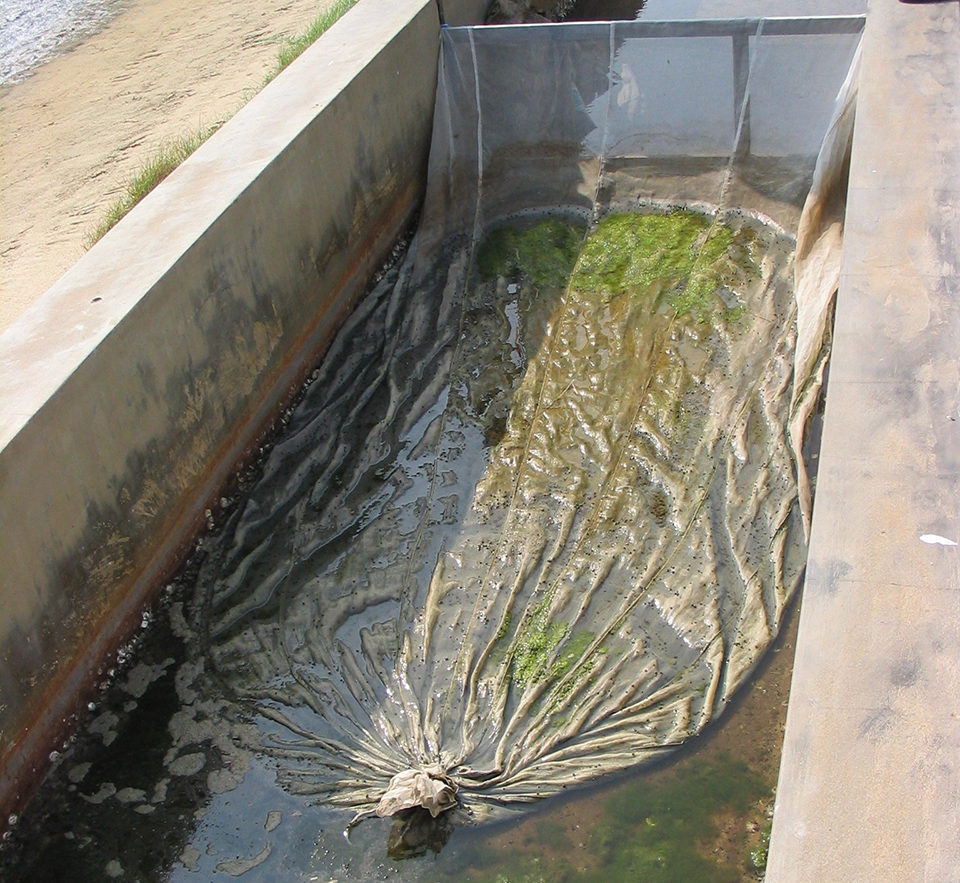
Price problems
The major problem reported by most farmers in 2003 was the low prices in the market in the later months of the year. Procurement prices briefly fell to less than the break-even level of Rs. 220 (U.S. $5) per kilogram for 40-count shrimp in late 2003, and buyers showed reluctance, causing widespread frustration. The strengthening by nearly 10 percent of the Indian rupee against the U.S. dollar over the course of 2003 also put Indian shrimp in an unfavorable position.
Shrimp prices have improved recently, but producers are resigned to the fact that prices will never reach past high levels. Concerns about the antidumping lawsuit in the United States and its potential ramifications also exist in the market. Impending European regulations on traceability and other food safety issues are other major concerns.
Viral diseases
Though farmers have successfully managed viral disease problems in the past, they are concerned about the persistence of various shrimp viruses and the possible emergence of new ones. The most persistent and significant problem is WSSV. Outbreaks of this disease during unfavorable environmental conditions usually wipe out crops, so farmers resort to emergency harvesting to salvage as much as possible.
Many farms have implemented biosecurity practices such as fine-filter filtration and chlorination, but the high temperature and salinity conditions in many shrimp-farming areas make water exchange necessary during the culture cycle. This increases the risk of viral disease occurrence. The successive failures of monsoon rains in the last two years in southern India have decreased the availability of water suitable for shrimp farming. Consequently, farmers are forced to exchange water more frequently.
Loose shell syndrome
Farmers rate the increasing occurrence of Loose Shell Syndrome as one of the most significant problems faced by the Indian shrimp-farming industry. This condition is manifested in shrimp when the animals’ muscles shrink within their shells. Affected animals become pale in color, lose appetite and slowly die off. Although its causative factors are not well understood, the lower survival and growth associated with Loose Shell Syndrome result in lower economic returns.
Slow growth
Farmers have observed a general decline in the growth of shrimp stocks, particularly tiger shrimp. Due to their poor rate of growth, the culture period has generally extended to 140 to 160 days at densities of more than 10 animals per square meter. No clear reasons for this decline in growth rate are evident, but it is generally felt it may be related to the presence of viral pathogens.
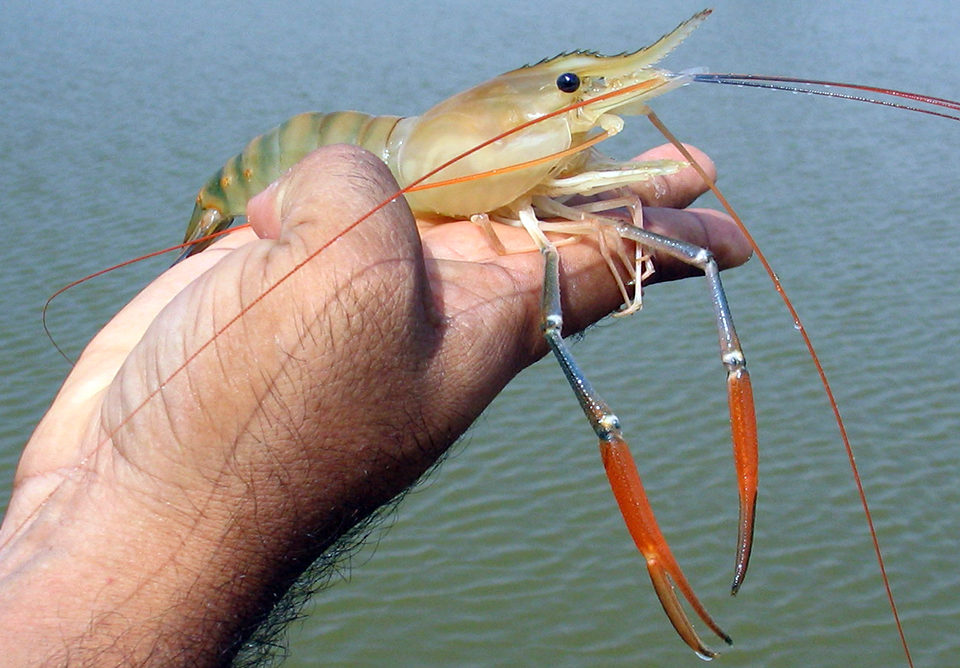
Industry needs
The primary need of the Indian shrimp-farming industry is to have pathogen-free stocks. The industry’s reliance on wild broodstock and the decreased abundance of pathogen-free stocks in the wild mean the industry has to look for alternative broodstock resources.
Species considerations
The introduction of the Pacific white shrimp (Litopenaeus vannamei) is advocated as a solution by some because specific pathogen-free (SPF) stocks are available for this species. Permission has been granted by the Indian government to import the species under strict quarantine conditions and for experimental purposes only.
Some imports of white shrimp stocks apparently occurred before the permission was granted. The government has banned the use of such stocks in pond culture, and the interest in white shrimp declined after hearing that countries such as China, Thailand and Indonesia are producing vast quantities of this shrimp and driving down the market prices for the species.
Some advocate the strategy of using tiger shrimp as the primary species in the industry and targeting large shrimp for the high-value segments of the shrimp market. The government’s Marine Product Export Development Authority intends to fund and direct the development of an SPF stock program for tiger shrimp in India. If successful, this effort will have a major impact on shrimp farming there.
Integration
Given the fact that world shrimp production is increasing and prices are falling, the second major need for the Indian industry is to be competitive in its production efficiency in the global market. The trend of declining prices is expected to exert pressures on the prices of all inputs, most particularly feeds. There will also be a trend towards integration, either virtually through the formation of alliances among hatchery owners, feed companies, farmers, processors and exporters or in physically integrated site facilities. The increasing stringency of food safety laws in the major shrimp consumption markets will only accelerate the pace of integration.
Local markets
Finally, there is a need to promote shrimp for local markets, where consumption is low. This has largely been related to the low purchasing power of Indian consumers. However, India has grown in economic strength since the early 1990s, and the size of the Indian middle class is now numbered at more than 300 million people. Gradual development of cold storage infrastructure and acceptance of processed foods in major urban markets will represent opportunities for shrimp producers to tap into the large Indian market.
(Editor’s Note: This article was originally published in the February 2004 print edition of the Global Aquaculture Advocate.)
Now that you've reached the end of the article ...
… please consider supporting GSA’s mission to advance responsible seafood practices through education, advocacy and third-party assurances. The Advocate aims to document the evolution of responsible seafood practices and share the expansive knowledge of our vast network of contributors.
By becoming a Global Seafood Alliance member, you’re ensuring that all of the pre-competitive work we do through member benefits, resources and events can continue. Individual membership costs just $50 a year.
Not a GSA member? Join us.
Authors
-
Sankaranarayanan Chandrasekar
INVE India, 19 Raja Street, Kalyani
Nagar, Kottivakkam, Chennai
600 041, India[109,111,99,46,115,111,99,121,108,64,56,54,95,115,97,114,100,110,97,104,99]
-
Jayaraman Nagarajan
INVE India, 19 Raja Street, Kalyani
Nagar, Kottivakkam, Chennai
600 041, India -
A. Victor Suresh, Ph.D.
Aquafeeds Consultant
Chennai, India
Related Posts

Health & Welfare
A study of Zoea-2 Syndrome in hatcheries in India, part 1
Indian shrimp hatcheries have experienced larval mortality in the zoea-2 stage, with molt deterioration and resulting in heavy mortality. Authors investigated the problem holistically.
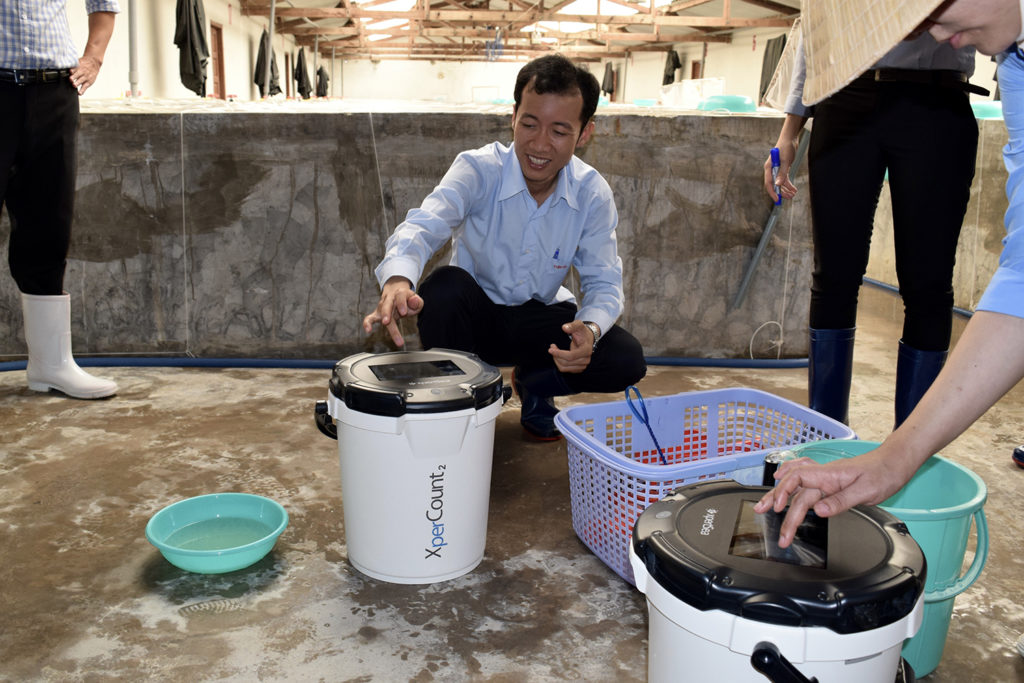
Innovation & Investment
AI platform delivers data to fish and shrimp farmers
XpertSea does more than count fish. It uses AI and computer vision to calculate growth rates and optimal harvest dates to improve aquaculture efficiency.
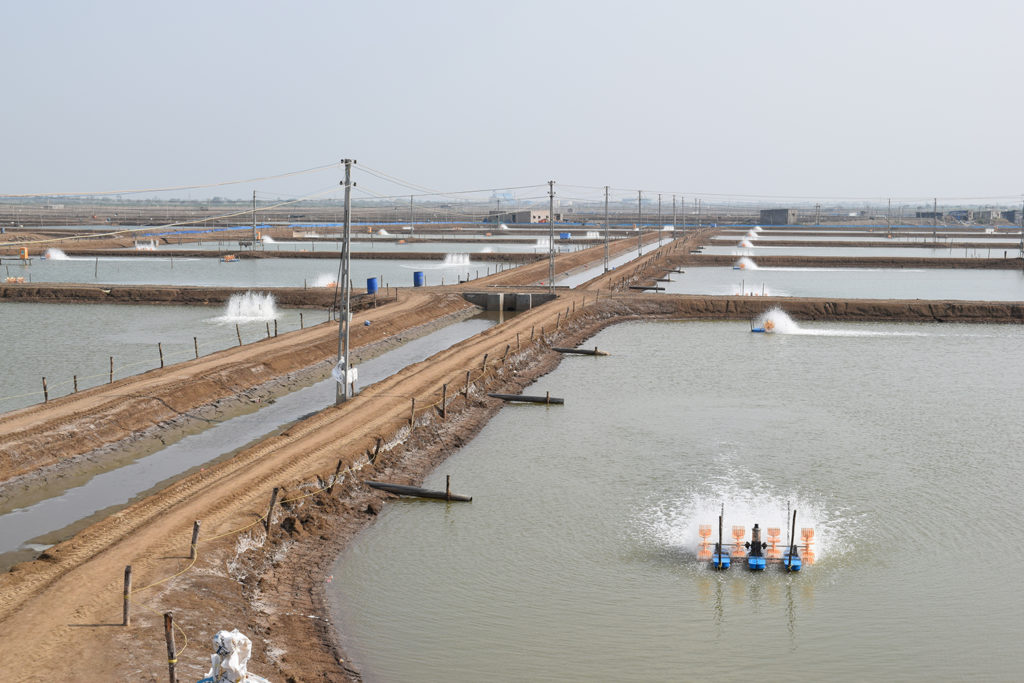
Intelligence
Can India sustain its farmed shrimp boom?
Long a global leader in farmed fish production, India has transitioned into an aquaculture powerhouse. Can its expanding shrimp sector keep the rapid pace?
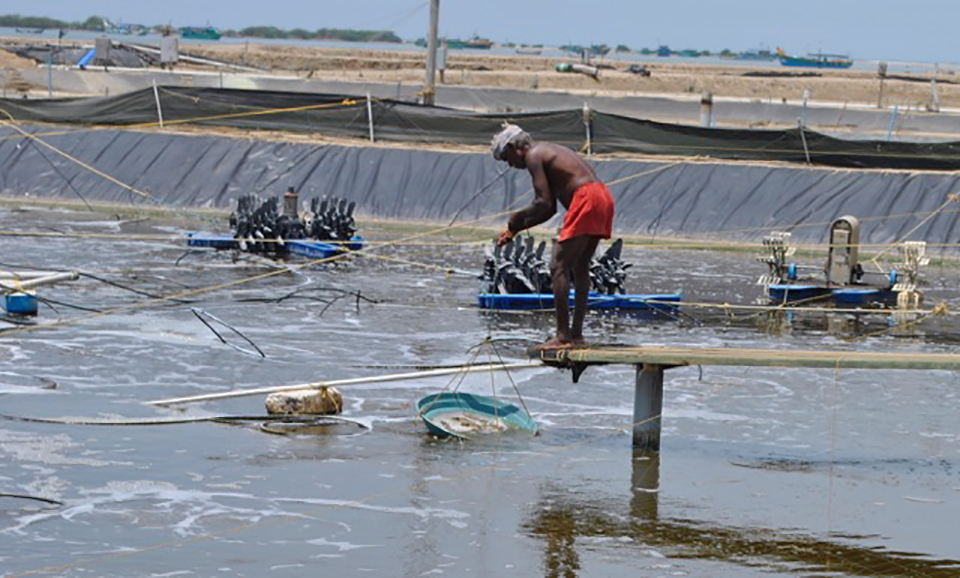
Innovation & Investment
If it’s broken, fix it: Startup takes on shrimp industry in India
A serial tech entrepreneur and a shrimp trader want to be Amazon for India’s shrimp farming industry. An accelerator program half a world away has brought them closer to their goals.


